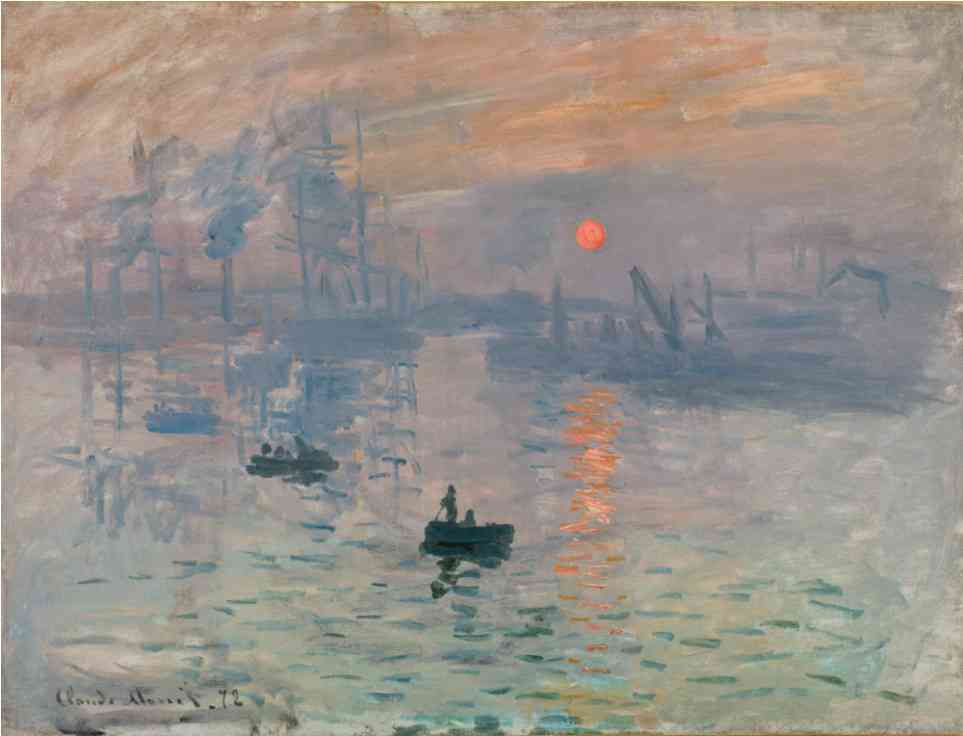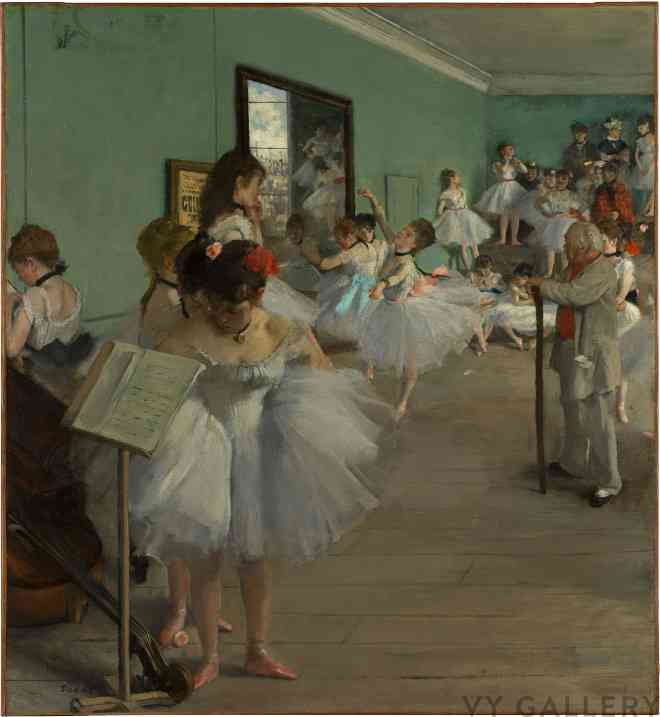As France gears up to celebrate one of the most momentous exhibitions in art history, Alastair Smart traces the genesis and growth of a movement synonymous with the world’s favourite artists, from Monet to Renoir, Pissarro to Morisot
Auguste Renoir (1841-1919), Bal du moulin de la Galette, 1876 (detail). Oil on canvas. 131.5 x 176.5 cm. Paris, Musée d’Orsay. Photo: Bridgeman Images
In 1867, Frédéric Bazille wrote to his parents that he and a group of fellow painters had failed to fulfil their dream of launching an independent art exhibition. They simply couldn’t raise the funds. ‘We’ll have to re-enter the bosom of the administration whose milk we have not sucked,’ he said ruefully, referring to the all-powerful Académie des Beaux-Arts.
Bazille and his young friends — Claude Monet, Auguste Renoir and Camille Pissarro among them — disliked the way that, to succeed as an artist in mid-19th-century France, one had to have work shown at the official Académie-run exhibition, the Salon. He dubbed the situation ‘ridiculous’, on grounds that the Salon’s selection panel was stuffy and consistently favoured academic art over anything innovative.
Tragically, Bazille would die on a battlefield three years later, shortly after enlisting in a light infantry regiment at the start of the Franco-Prussian War. He was 28. The war ended in ignominious defeat for the French, culminating in a victory march through the streets of Paris by enemy forces and an indemnity payment of five billion francs (due to the Germans within five years).
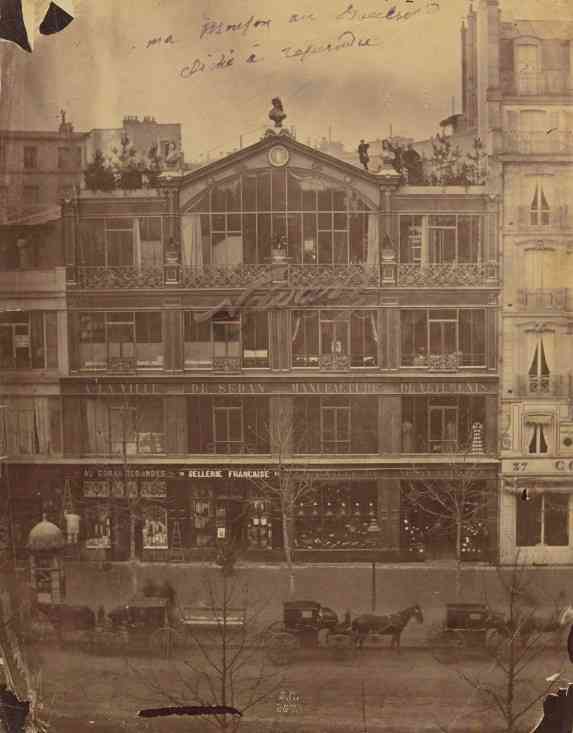
Remarkably, belying such a context, Monet, Pissarro and Renoir soon helped launch the independent exhibition that they and Bazille had craved. It opened on 15 April 1874 in Paris, in the erstwhile studio of the photographer Nadar, at 35 Boulevard des Capucines. The exhibition, perhaps the most momentous in art history, featured work by 30 artists who went under the collective name of the Société Anonyme des artistes peintres, sculpteurs, graveurs, etc.
We know them better today as the Impressionists.
This year marks the 150th anniversary of the first Impressionist show — there were eight in total, the last of which took place in 1886. A number of celebratory events are planned, including a whole festival dedicated to the movement in Normandy. Exhibitions will also be held in cities such as Strasbourg, Bordeaux and Nantes. In Paris, the Musée d’Orsay is hosting the biggest show of all, Paris 1874: Inventing Impressionism, focusing on the movement’s advent. (This later transfers to the National Gallery of Art in Washington, D.C.)
Nowadays, the Impressionist painters — collectively and individually — are beloved worldwide, their names all but guaranteed to attract huge crowds. The challenge for any curator in 2024, though, is how to recreate a sense of the sheer radicalism of the work when it first appeared — not just the aesthetic, but also the way the artists staged the whole debut show themselves and engaged directly with their audiences. A look at the reviews from 150 years ago may help.
Claude Monet (1840-1926), Impression, soleil levant, 1872. Oil on canvas. 50 x 65 cm. Paris, Musée Marmottan Monet. Photo: © Musée Marmottan Monet, Paris / Studio Baraja SLB
Some were positive, some were negative, with very few neither one nor the other. Ernest d’Hervilly, writing in the newspaper Le Rappel, called the works ‘fresh and gripping’, adding that ‘one cannot encourage this daring undertaking too much’.
A critic who went by the name of A.L.T., by contrast, wrote in the conservative newspaper La Patrie that seeing the show left ‘you sorry you didn’t give the franc you paid to enter to some poor beggar’.
It was an exhibition review, in fact, that gave the movement we now know as Impressionism its name. The critic in question, Louis Leroy, was distinctly underwhelmed by what he saw. Aiming particular barbs at Monet’s painting of the port of Le Havre, Impression, soleil levant (Impression, Sunrise), he claimed (among other things) that ‘a preliminary drawing for a wallpaper pattern is more finished than this’. Appearing in the satirical magazine Le Charivari, Leroy’s review ran with the disparaging headline: ‘The Exhibition of the Impressionists’.
That name ended up sticking, and the artists themselves even came to adopt it by the time of their third exhibition in 1877.
It’s worth saying that the Impressionists didn’t emerge out of a vacuum. Influences on them included Edouard Manet; the Realist master Gustave Courbet; painters of the Barbizon school, such as Charles-François Daubigny; and the Englishman J.M.W. Turner. That said, there were a whole host of ways in which Impressionism proved groundbreaking — and, as such, polarising.
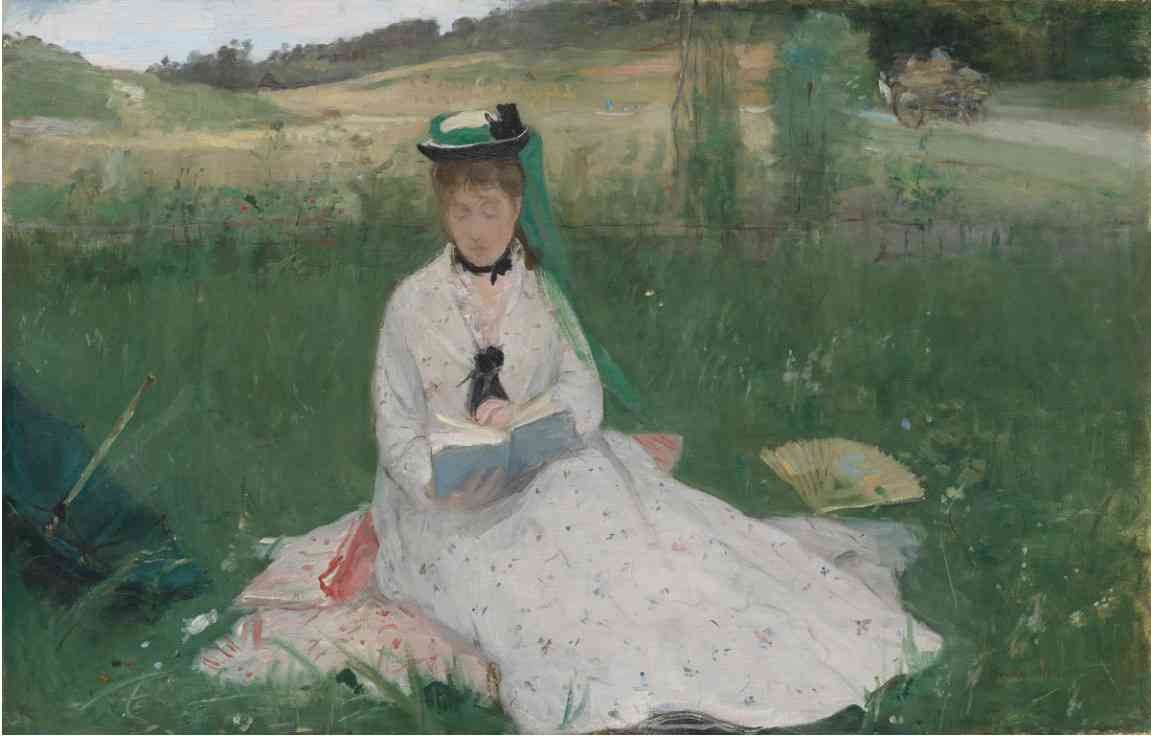
There were the short, broken brushstrokes, for a start, which barely conveyed forms, instead capturing an overall impression of subjects and emphasesing the effects of light in a fleeting moment. This was a far cry from the smooth surfaces, careful finish and fully developed forms associated with the Académie.
The Impressionists also adopted a brighter palette than viewers were used to, thanks in part to the recent development of synthetic pigments. They even chose to render shadows in colour rather than, as had hitherto been usual, grey or black.
The advent of squeezable metal paint tubes in the mid-19th century proved significant, too. They were more portable and resilient than pigs’ bladders — which had previously been used to store paints — and facilitated the Impressionist practice of painting pictures en plein air. Light effects could now be captured in situ, in an unprecedentedly faithful manner. (Artists had long painted outdoors, but before the 19th century tended to create preparatory sketches in this manner and produce finished paintings in the studio.)
Edgar Degas (1834-1917), The Dance Class, 1874. Oil on canvas. 32⅞ x 30⅜ in (83.5 x 77.2 cm). Bequest of Mrs Harry Payne Bingham, 1986. The Metropolitan Museum of Art, New York
Another innovation was the dramatic cropping that certain Impressionists adopted — Edgar Degas most notably, in his off-centre pictures of ballet classes. This was a technique borrowed from photography and ukiyo-e prints, which had recently been introduced into the West from Japan.
Impressionists, then, responded to the modern world in numerous ways, and this extended to their subject matter. Rather than produce history painting — a genre long favoured at the Salon and inspired by biblical, mythological or historical episodes — they depicted modern life. Which is to say, scenes taking place amid the wide boulevards, public gardens and grand buildings that newly characterised Paris, thanks to Baron Haussmann’s drastic renovation of the city in the 1850s and 1860s. Everyday people were portrayed going about everyday activities, often in burgeoning new spaces of recreation such as cafés and theatres. A famous example is Renoir’s 1876 painting, Bal du moulin de la Galette, a portrayal of Parisians enjoying themselves on a Sunday afternoon at a popular dance spot on the Butte Montmartre.
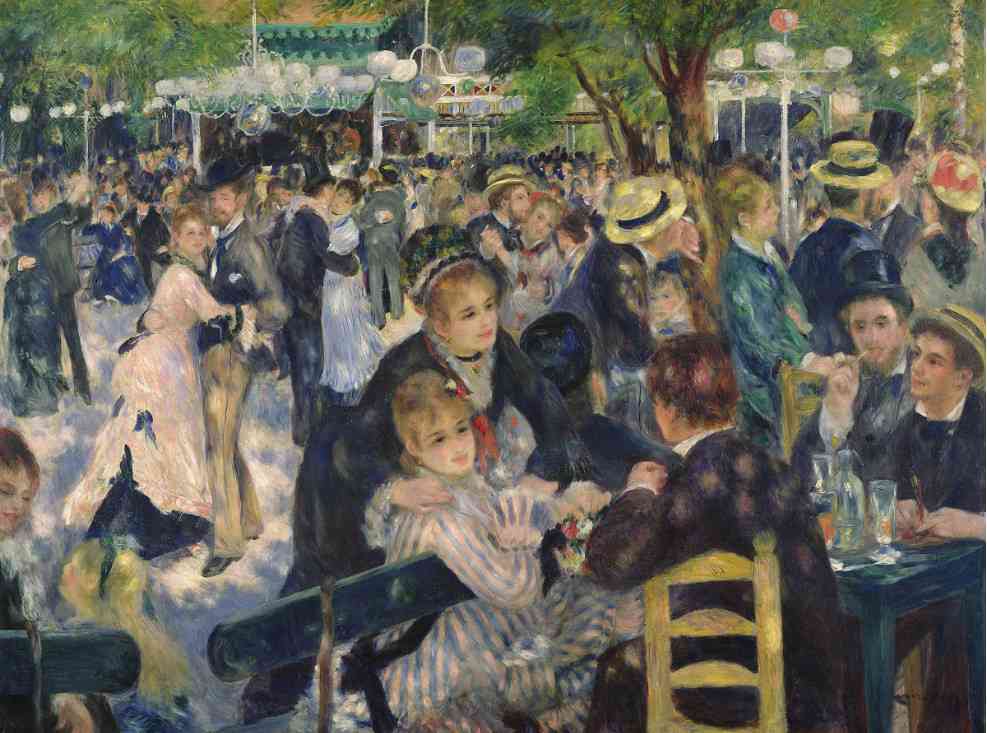
With good reason, Impressionism is remembered as a movement that revolutionised painting. That revolution took a while to catch on, though. Some 3,500 people visited the debut exhibition during its month-long run, significantly fewer than attended the 1874 Salon on an average day.
What they saw was an eclectic mix of works in different media: not just paintings but also prints, pastels and watercolours, as well as sculptures in marble, terracotta and plaster. It’s true that the big names we associate with Impressionism showed the most works: Degas with 10, Monet and Berthe Morisot with nine apiece. However, several artists featured whose work was much more traditional in style, and who in some cases had even shown at the Salon before, such as Auguste de Molins and Louis Debras, both of whom were in their fifties.
Their inclusion was the source of disagreement. Pissarro, arguing that it compromised the group’s integrity, eventually lost out to Degas, who felt that established artists would attract more visitors. As Anne Robbins, the co-curator of Paris 1874: Inventing Impressionism, points out, ‘the movement was not born fully formed’ — and there ‘wasn’t a common aesthetic that bound the artists’ at first, so much as ‘a common desire to show away from the Salon’.
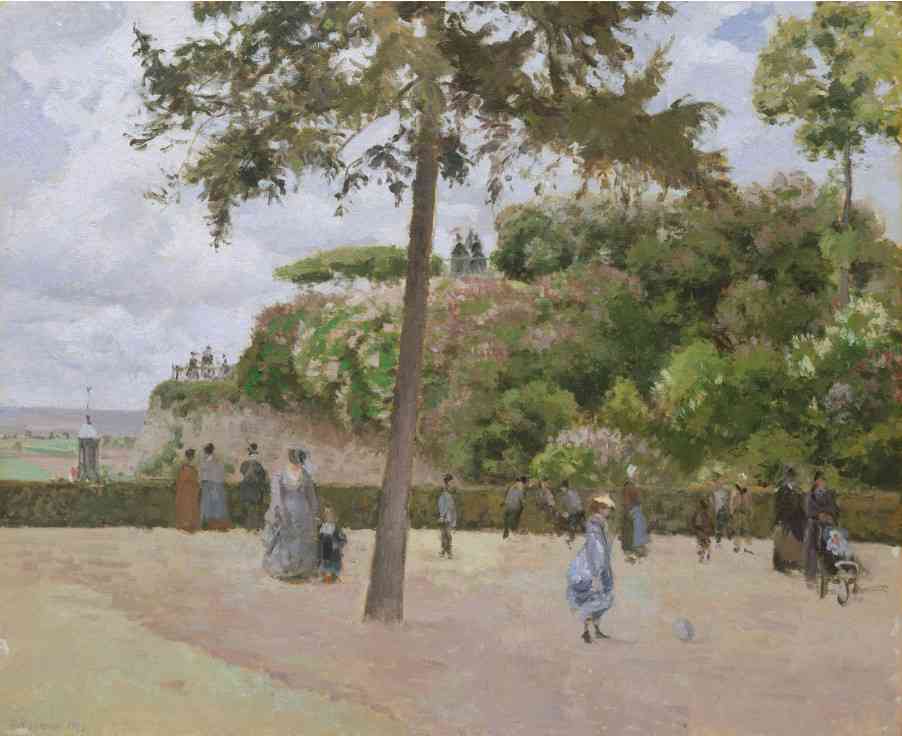
There would be other ‘in-house’ disagreements in the years ahead. The ever-combative Degas, for example, disdained his comrades’ fondness for working en plein air. He quipped that ‘if I were the government I would have a special brigade of gendarmes to keep an eye on artists who paint landscapes from nature’.
On the plus side, the Impressionists now had something of the financial security that had been lacking in 1867. This came partly courtesy of dealer Paul Durand-Ruel, who paid the artists stipends and bought hundreds of their paintings. ‘We Impressionists would all have died of hunger without him,’ said Monet (with perhaps some exaggeration) late in life.
When we think of Impressionism today, a group of core figures comes to mind — Degas, Monet, Morisot, Pissarro, Renoir and Alfred Sisley — painters who expounded all or most of the Impressionist traits outlined above. It’s worth noting, though, that a total of 58 artists showed work across the eight exhibitions, with only Pissarro featuring in every one.
Monet actually opted against participating in the fifth exhibition, in April 1880, and showed at that year’s Salon instead. Le Gaulois newspaper reported the news with dark humour, informing readers of the ‘painful loss’ of ‘one of [Impressionism’s] revered masters’ — and announcing that ‘the funeral of Monsieur Claude Monet will be celebrated on 1 May [the opening day of the Salon]’.
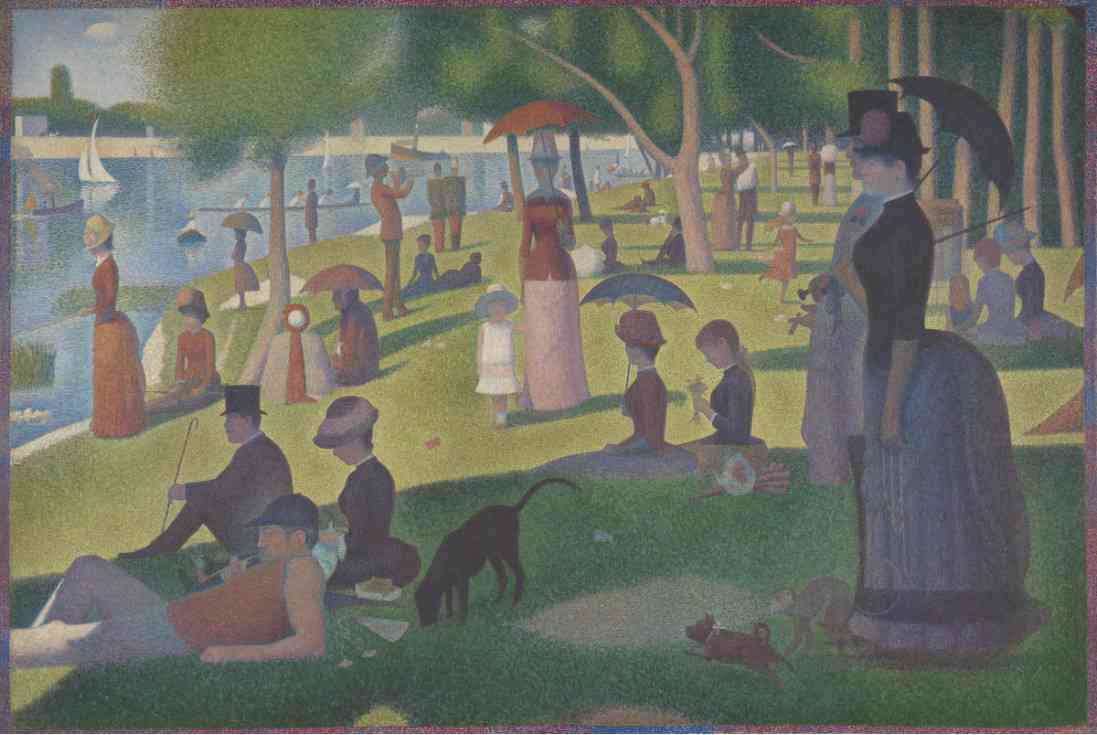
All of which is to say that Impressionism was a less homogeneous movement than is sometimes believed, with its aims continually being negotiated. Indeed, although the 1886 exhibition is — for obvious reasons — deemed a last hurrah, one might see it instead as a further example of evolution.
Included in that show was George Seurat’s painting A Sunday on La Grande Jatte — 1884, the founding masterpiece of Neo-Impressionism. As its name makes clear, this was a movement born out of Impressionism, the key development being a more systematic application of brushstrokes. Alongside Seurat and Paul Signac, Pissarro would become a chief exponent.
Credit: Christie’s Online Magazine

